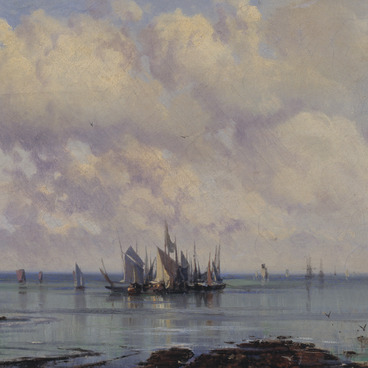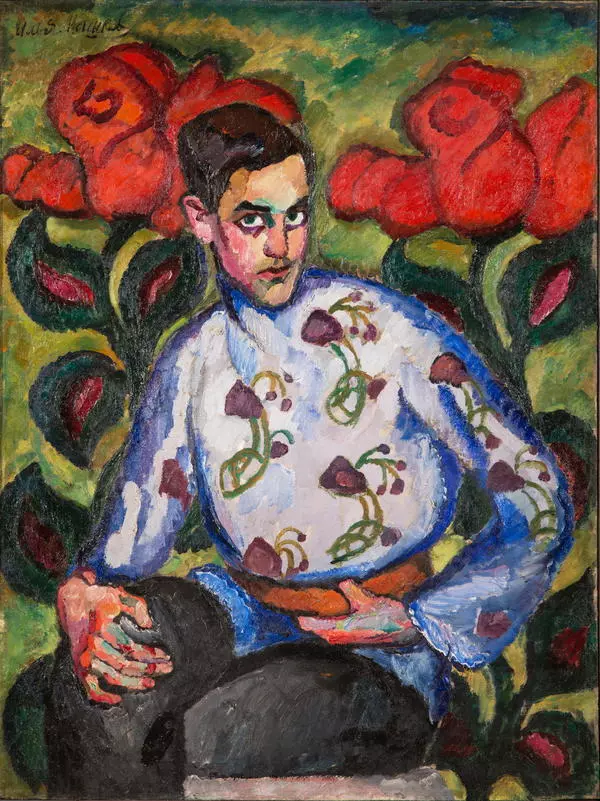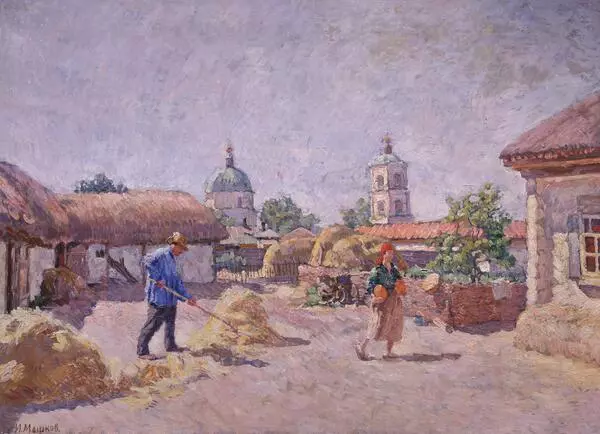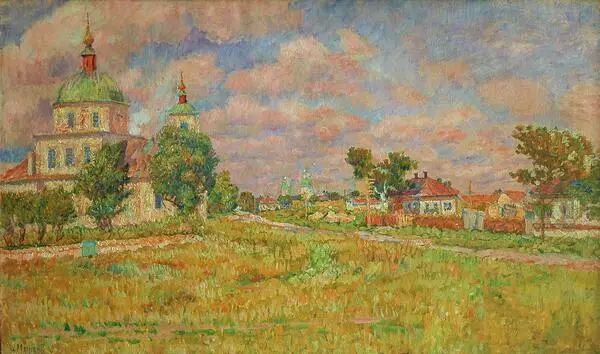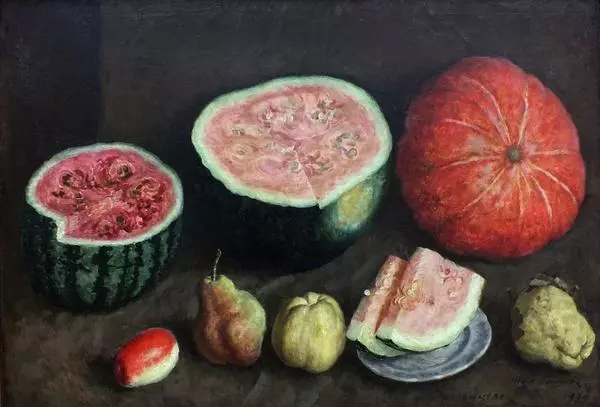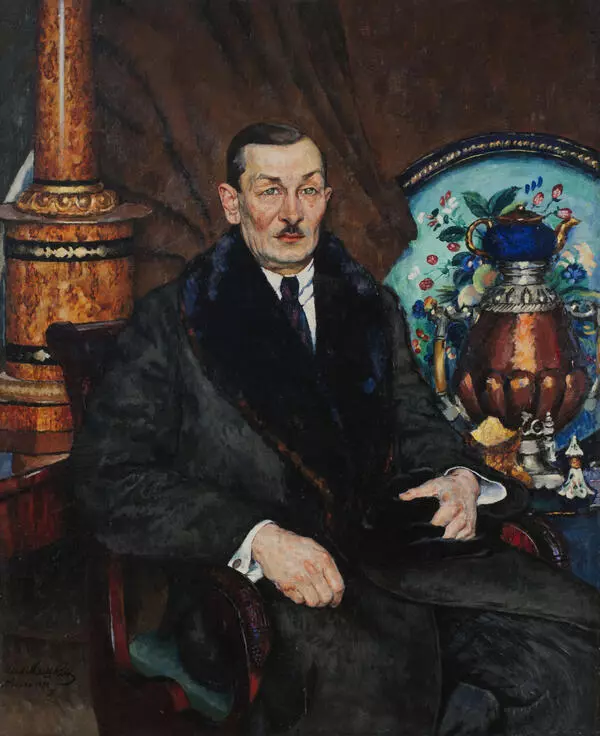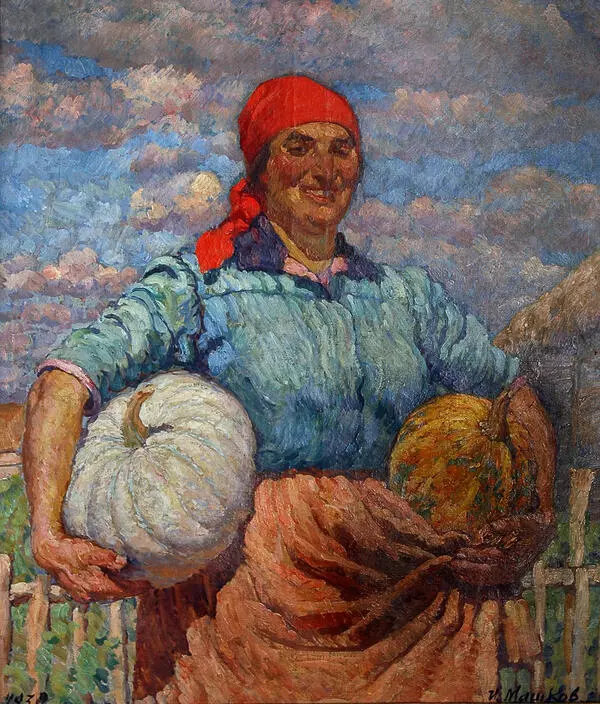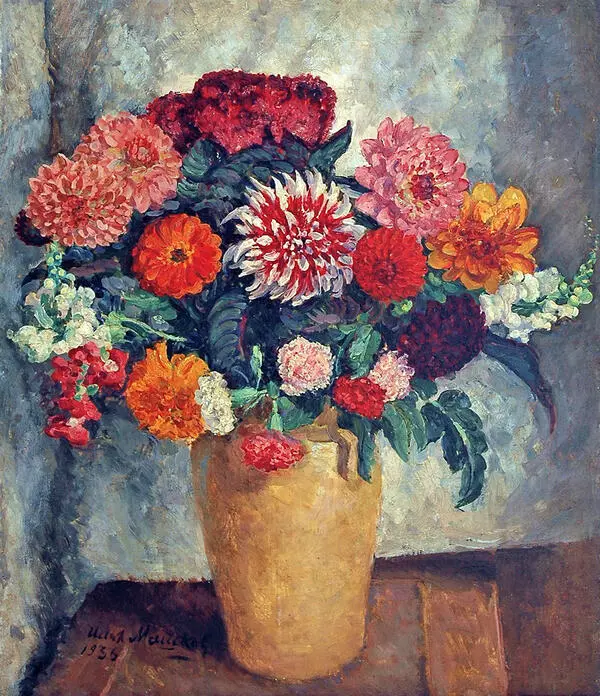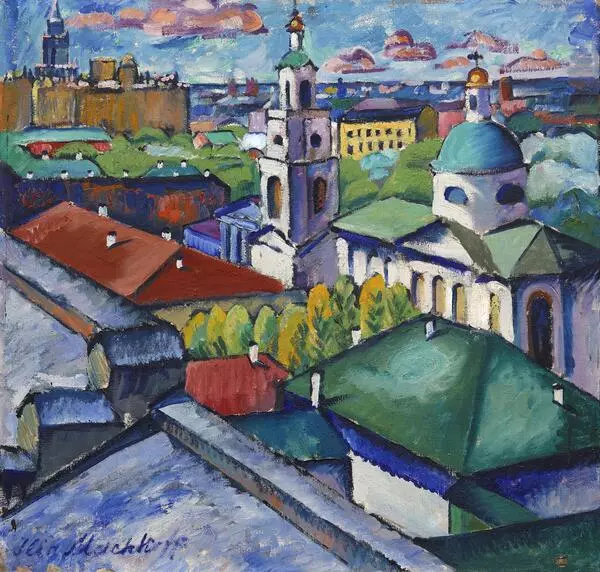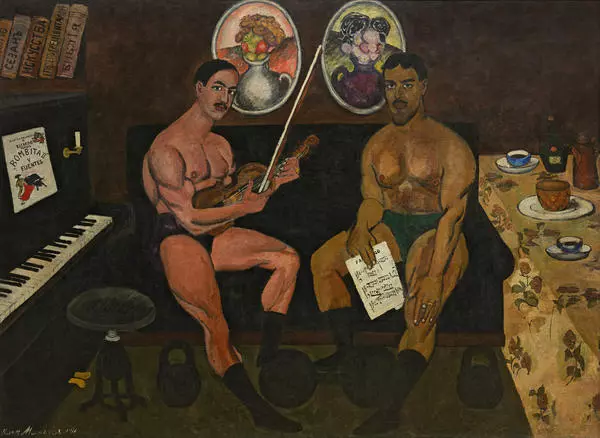Ilya Mashkov became well known as a master of still life. In the second half of the 1920s, the artist began to say that he wanted to create a ‘real revolutionary painting’. His main creative challenge was to convey current socialist ideas with the help of a still life.
’… I felt that it was time to start working on myself as a social activist and artist, that I should seek to implement those ideas into art for which the best part of humanity lives and fights’, Mashkov wrote in his autobiography.
The most paradoxical work of this genre was his conceptual still life painting ‘Greetings to the 17th Congress of the All-Union Communist Party (Bolsheviks)’. This painting, being ‘socialist in content’, resembles bast signs, folk decorative, and applied art both in its bright color and composition. He was well acquainted with the art principle of folk signs ‘display to advantage’. Mashkov created a still life composition on the principle of a pyramid, in which sculptural busts replace objects of gastronomy.
The perfect symmetry of the arrangement of leaders’ busts and huge calico flowers refers to archaic altar compositions and festive decoration of a village — church, where bouquets, towels, and paper rosebuds are combined with images. Probably the space decorated with flowers reflects the idea of world prosperity and abundance.
For the first time, the official definition of socialist realism appeared in the Charter of the Union of Writers of the USSR, adopted at the First Congress of the Union of Writers:
’… I felt that it was time to start working on myself as a social activist and artist, that I should seek to implement those ideas into art for which the best part of humanity lives and fights’, Mashkov wrote in his autobiography.
The most paradoxical work of this genre was his conceptual still life painting ‘Greetings to the 17th Congress of the All-Union Communist Party (Bolsheviks)’. This painting, being ‘socialist in content’, resembles bast signs, folk decorative, and applied art both in its bright color and composition. He was well acquainted with the art principle of folk signs ‘display to advantage’. Mashkov created a still life composition on the principle of a pyramid, in which sculptural busts replace objects of gastronomy.
The perfect symmetry of the arrangement of leaders’ busts and huge calico flowers refers to archaic altar compositions and festive decoration of a village — church, where bouquets, towels, and paper rosebuds are combined with images. Probably the space decorated with flowers reflects the idea of world prosperity and abundance.
For the first time, the official definition of socialist realism appeared in the Charter of the Union of Writers of the USSR, adopted at the First Congress of the Union of Writers:


